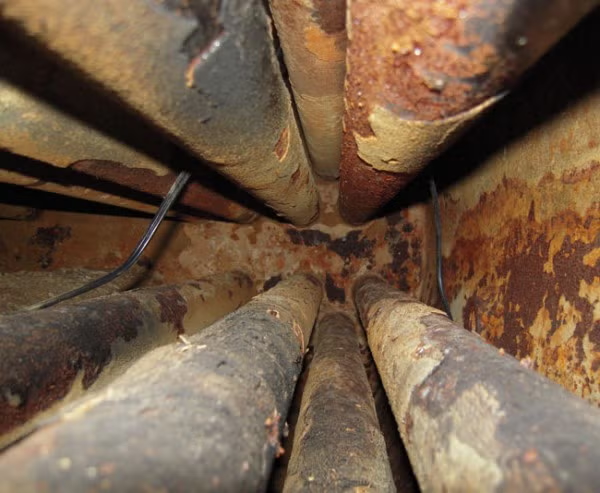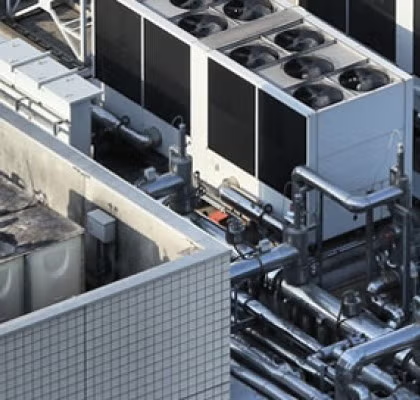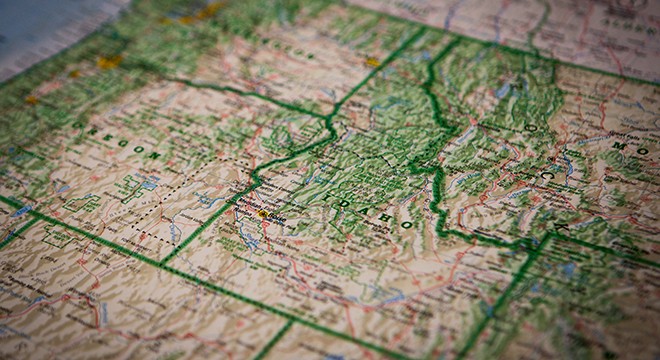Soot & Scale Affects Boiler Performance

Scrape and Flush Boiler Tubes for Lower Heating Costs
Maintaining a scheduled cleaning program for boilers is essential to reducing costs and increasing equipment life. Whether the firetube, or watertube type, dirty boiler tubes cause more fuel to be used and drives up heating costs. Inefficiency caused by dirty tubes, also results in more frequent cycling of motors, blowers, other heating system components and can lead to costly repairs and replacements.
A firetube boiler has tubes that carry hot gases. The tubes are surrounded by water that is heated. The hot gases flowing through the tubes carry the by-products of combustion, primarily soot and scale, which are deposited on the inside surfaces of the tubes. The greater the amount of the deposit, the lower the heat transfer to the water will be and the harder the boiler must work. No matter what type of fuel is used (gas, oil, coal), soot quickly accumulates in the firetubes.
Because soot has five times the insulating value of asbestos, the heat transfer loss in a dirty boiler rises dramatically, as the layer of soot builds up. For example, 1/8" (3.2mm) of soot, which can build up in only two weeks, results in a heat loss of 47% - with an increased fuel consumption need of 8 1/2%. Scale builds up over a longer period of time and also contributes to boiler inefficiency. Heat loss of 8% and increased fuel consumption of 2% will result from only 1/32" (0.8mm)of scale in the boiler tubes.
In a watertube boiler, water runs through tubes that are surrounded by the heating source. Because the water is heated to very high temperatures in this type of boiler, the solids in the water tend to accumulate quickly on the tubes' inside surfaces, causing the same heat transfer problem and related cost increases that occurs in firetube boilers. Cleaning firetubes has traditionally called for putting a brush on the end of a rod, manually pushing the brush through each tube and then later, vacuuming the tubes.
In the case of watertube boilers, chemical solutions have been used to clean the inside of the tubes. An alternative to manual, or chemical methods, is automation of the entire cleaning operation. One unit automatically sends the cleaning tool, which can be a steel brush, or spring-loaded scale scraper, the full distance of the tube. Soot and scale are removed by vacuuming, or by water flow, with watertube boilers. For severely scaled tubes, equipment is available that rotates a flexible shaft with a cleaning tool and vacuum (or water flow) attachment through the tubes.
Every boiler cleaning program should include regular efficiency testing. Testing equipment is available that reveals certain trends that indicate it is time to clean the boiler. For example, an increase in stack temperature frequently signals soot, or scale buildup. An electronic combustion efficiency tester should be considered standard for the maintenance program. It analyzes flue gas and displays oxygen content, stack temperature and combustion efficiency. Comparison data from test to test will help pinpoint maintenance requirements.
Regular boiler maintenance that includes thorough cleaning of the boiler tubes, will result in lower operating costs and fuel consumption, greater efficiency and longer life for your heating system.
Example: Increased Fuel Consumption Through Loss of Boiler Efficiency Plant A Plant B SAVINGS 180,000 gallons 145,000 gallons 35,000 gallons (681,300 liters) per year (548,825 liters) per year (132,475 liters) per year (35,000 x 70ᄁ = $24,500)
SAVINGS
Plants A and B use No. 6 oil and produce 7,000 lbs (3,178 kg) of steam per hour. Both operate 260 10-hour days per year. The cost of the fuel oil is 70ᄁ per gallon. Plant A operates at 65% efficiency. It will use 180,000 gallons (681,000 liters) of oil in one year. Plant B operates at 80% efficiency. It will use only 145,000 gallons (548,825 liters) of oil in one year. By operating more efficiently, Plant B saves 35,000 gallons (132,475 liters) of fuel per year, reducing operating expenses by $24,500. (180,000 - 145,000) x 70ᄁ = $24,500 in savings.





